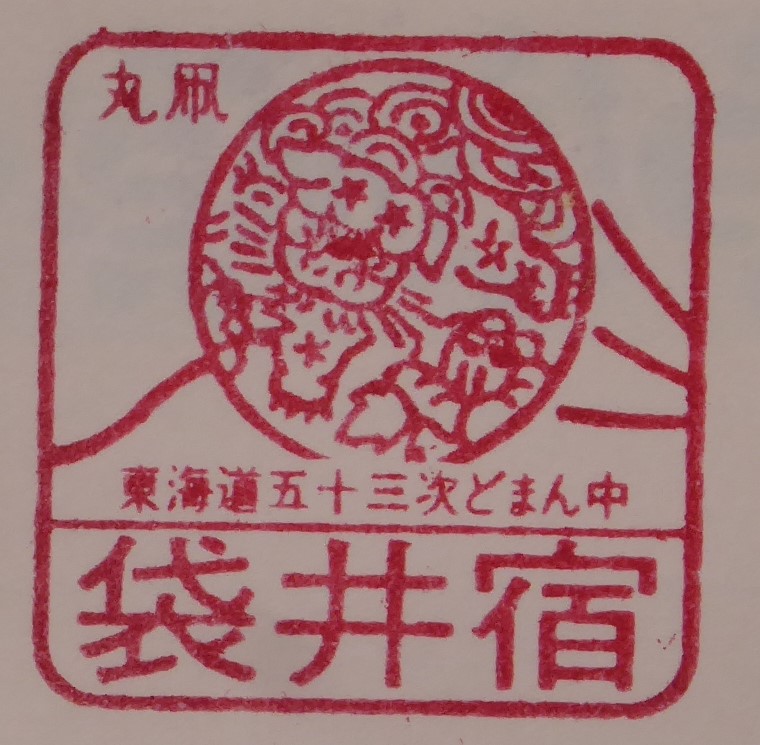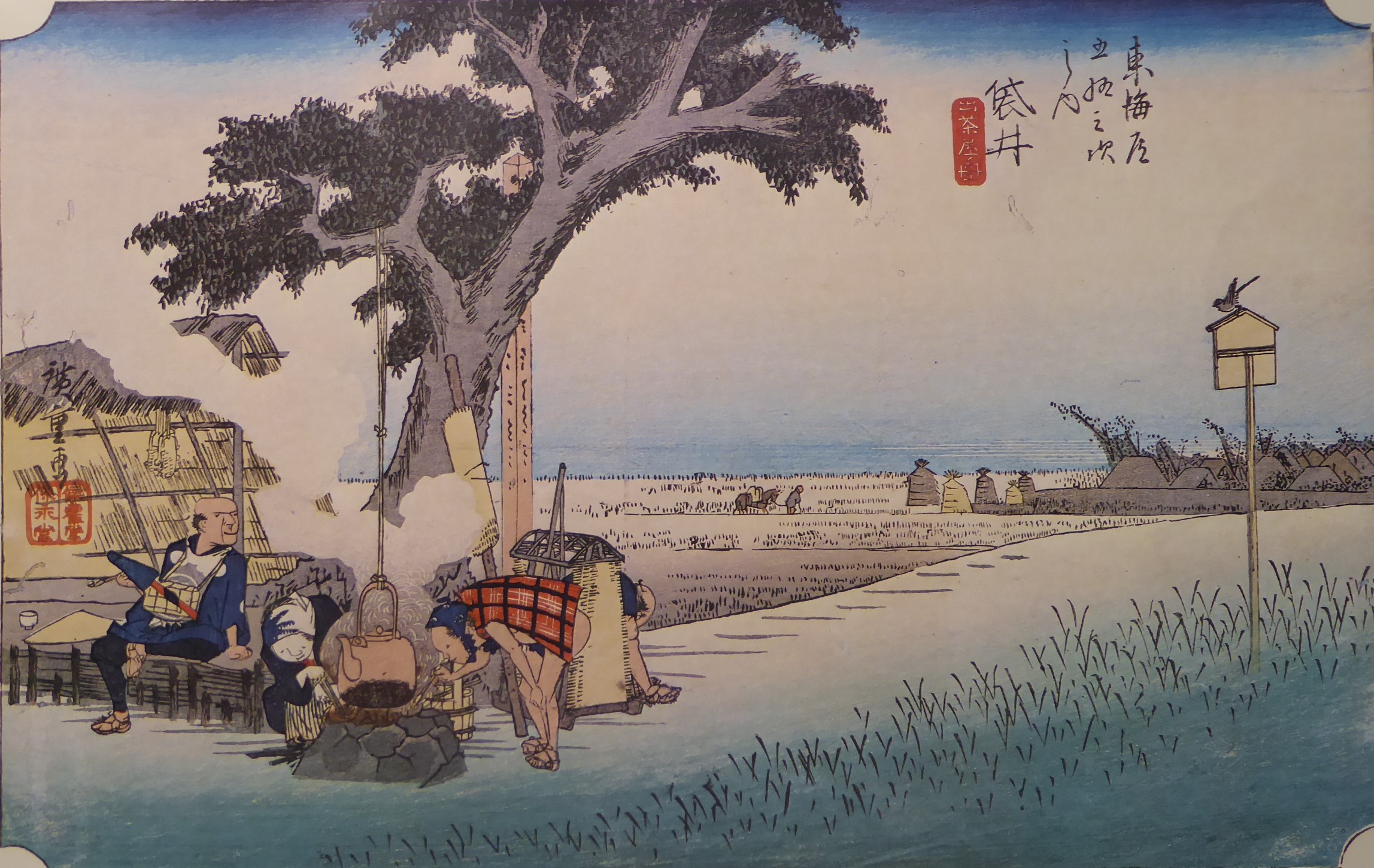Explanation of the Fifty-three Stations of the Tokaido 28 Fukuroi
5.9km from Mitsuke to Fukuroi, 34°44’51″N 137°55’24″E
Fukuroi is a post station on the old Tokaido, and is the 27th of the Fifty-three Stations of the Tokaido, whether counting from Edo or Kyoto, and is located at the midpoint.
As the “center of the Tokaido,” the town is currently being developed to make use of this as a tourist resource.
From Kakegawa, the next post stations were Mitsuke and Hamamatsu. The distance between Kakegawa and Mitsuke is relatively long.
The Haranoya River, located near the midpoint, frequently flooded and traffic was cut off.
Fukuroi was developed in 1616, a little later than the other post stations.
It is currently the center of Fukuroi City, Shizuoka Prefecture.
Historic temples and shrines, including the three mountains of Enshu, are scattered around the area.
It flourished as a temple town for these.
The townscape of the inn stretches 5 cho 15 ken to Nakagawa River at the western end, with a population of 843 and 195 houses, including 3 honjin and 50 inns.
There were three houses: the Tashiro family, known as the east honjin, the Ota family, known as the middle honjin, and the Ota family, known as the west honjin.
The east honjin is the largest.
The site measures 1068 tsubo (3530m2), and includes a group of buildings with a floor area of 288 tsubo (952m2).
The frontage facing the highway was 13.5 ken (25m) wide and 31 ken (57m) deep.
The Fukuroi Festival is a festival held in Fukuroi City, Shizuoka Prefecture.
It is a grand festival held to celebrate bountiful harvests and pray for good health.
It is the annual festival of four shrines: Jusansho Shrine, Shirahige Shrine, Nanatsumori Shrine, and Akao Shibutari Gunbu Shrine.
A joint event held by the parishioners’ towns is called the Fukuroi Festival.
There is a dish called “Omoro”, a pig’s trotter dish that originated in Fukuroi City.
The original “Omoro” is made by boiling pig’s trotters and is full of collagen.
Fukuroi was once the largest livestock market in the Orient.
Using those trotters, the previous head chef of Shimikin named the dish after the Okinawan folk song collection “Omoro Saushi”.
① “Hoeido version”
A scene of a teahouse on the outskirts of the inn.
“Dechaya” is a simple teahouse made of reed mats and other materials.
Dechaya is a place of rest for travelers to take a break by the roadside.
The owner of this teahouse is bent over, starting a fire in a hearth made of stones.
He is boiling water in a large kettle hanging from a tree branch.
The bottom of the kettle is pitch black with ink.
The rising smoke from the firewood creates a relaxing scene.
To the left of the owner, one of the palanquin carriers is lighting a cigarette with fire from the hearth.
Resting on the veranda to the left is a courier.
The swallow perched on the sign is striking.
② “Gyousyo version”
This is a rural landscape from Kakegawa to Fukuroi.
A row of pine and cedar trees is depicted from the front.
Drawn in perspective, it is clear that there are no mountains or hills in the distance.
③ “Reisho version”
This region is windy, and kite flying was popular.
④ “Hokusai version”
This is thought to be a landscape just before Dechaya.
⑤ “Travel image”
A rest area at a post station.
⑥ “Stamp image”
A stamp at a rest area.
Hoeido version

Gyousyo version
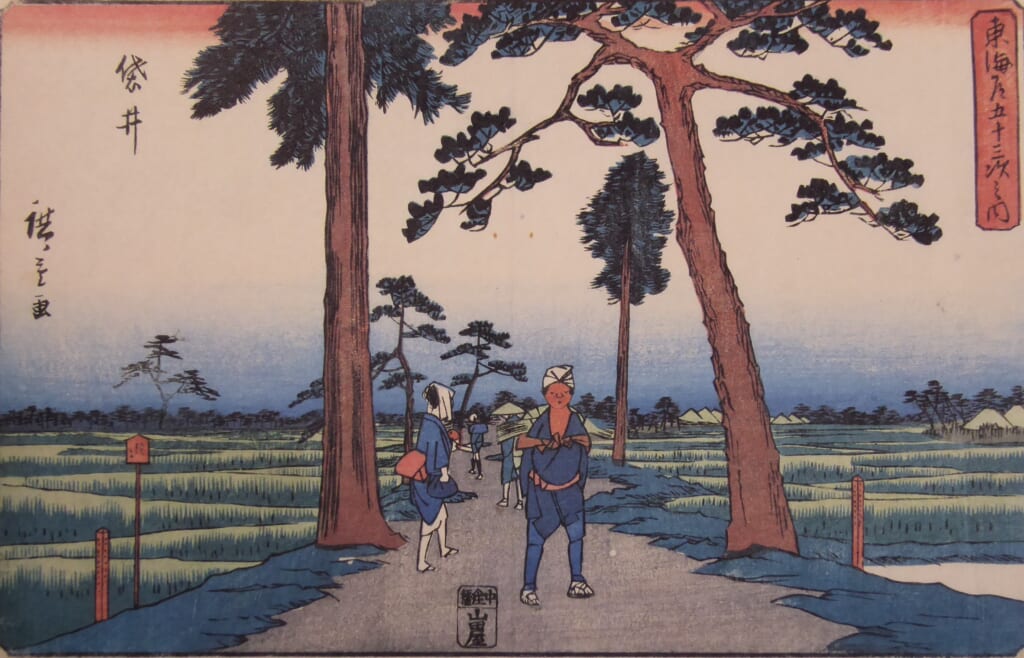
Reisho version
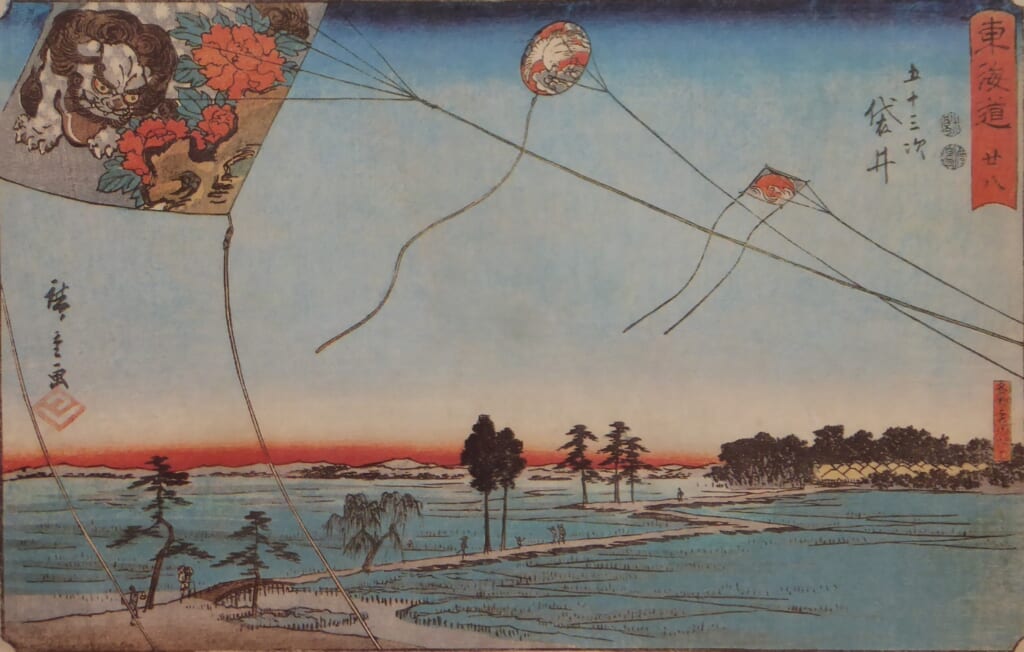
Hokusai version

Travel image
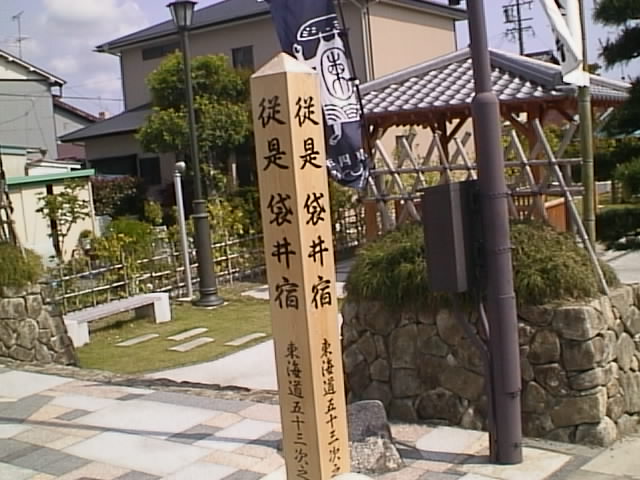
Stamp image
